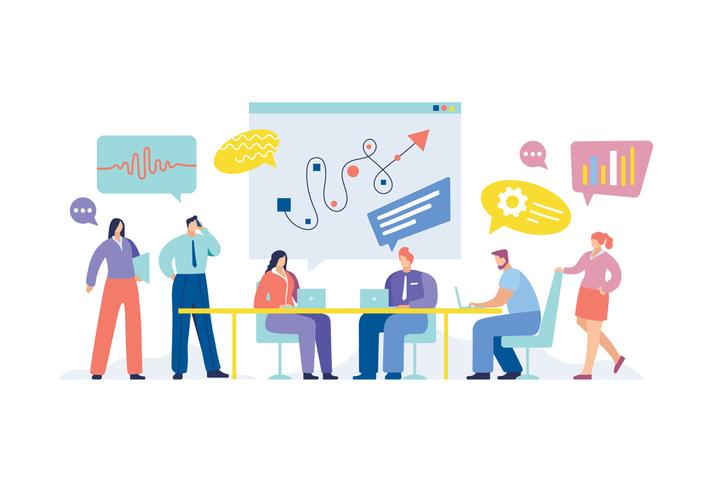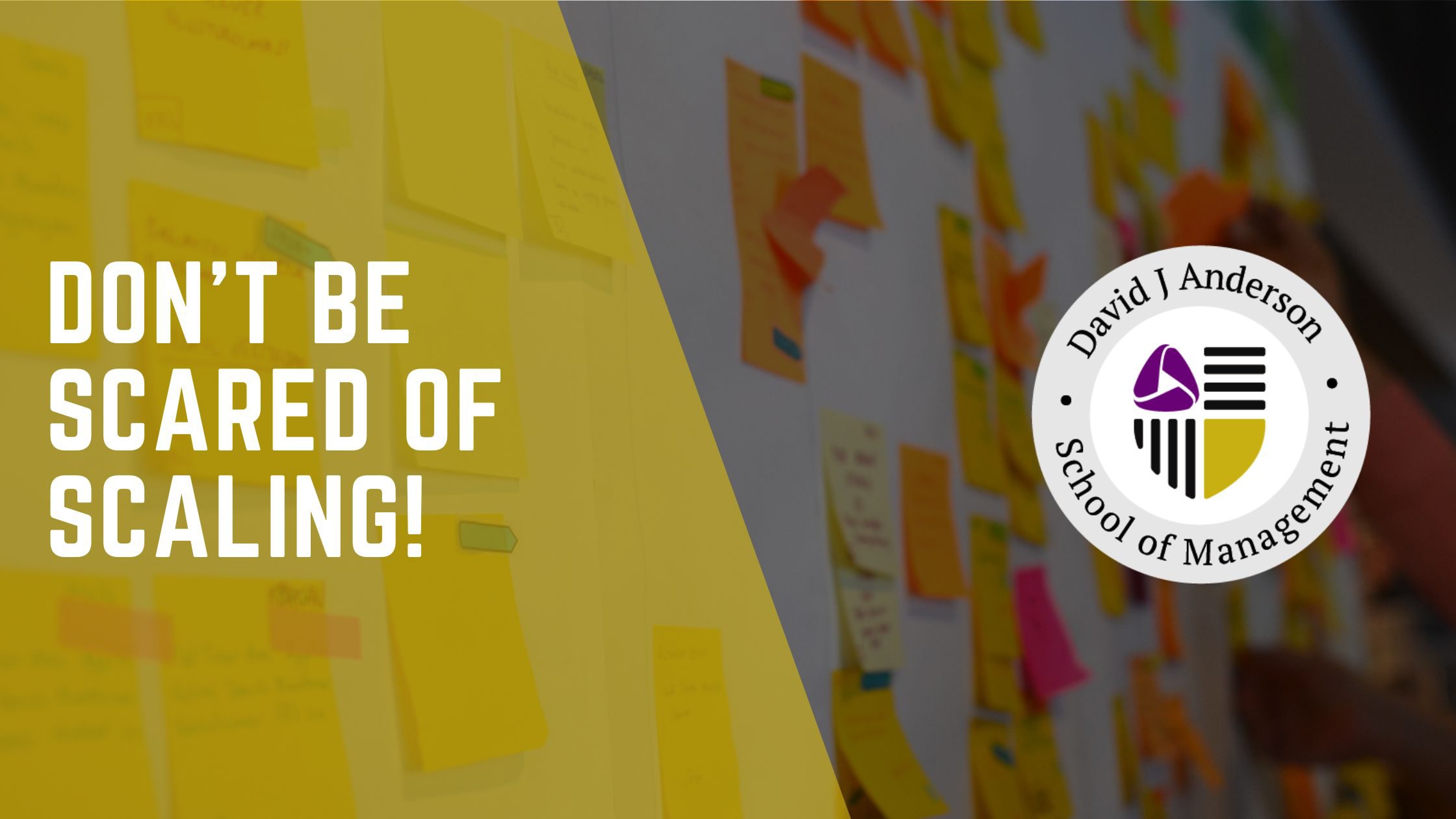Applicability of the Kanban Method to the Legal Sector
The Kanban Method has become exponentially popular thanks to its wide community of users in the software development services industry. Thanks to the simplicity with which it is understood, the flexibility in its application, and, above all, its success in rapidly improving results, it has spread to many service provision industries, for example, architecture, civil engineering, television & media production, advertising, market research and analysis, human resources and recruitment, financial reporting and, of course, legal services.

As it is a method or way of improving management, it is applicable to any organization or team, irrespective of size, or the previously adopted or existing methodologies, frameworks, or way of working. It does not prescribe specific development processes, nor pre-defined workflows, nor does it include new roles or responsibilities for the members of the work teams. There is never a question of using the Kanban Method versus a given methodology or framework.
The values promoted by the method
The Kanban Method takes as its starting point the fact that each organization is a network of individuals, connected psychologically and sociologically to resist change. The Kanban Method recognizes these human aspects.
At its heart the Kanban Method is concerned with the management of change avoiding resistance to it, starts with the Change principle of “start where you are”, through which change is catalyzed in an evolutionary way, respecting existing roles, responsibilities, and positions.
A “big bang” transformation from a current state to a future state is not pursued, but rather the implementation of the method is based on the agreement to pursue improvement through evolutionary change encouraging leadership at all levels.
Change management should be based on fostering leadership at all levels of the organization, that is, from the individual contributions of each person to the most senior positions.
We should not only think of leadership from the traditional roles such as those embodied in partner-directors or managers but rather leadership based on contributions from all lawyers and other members of the organization, who through their knowledge, experience, and observations, whether this is through mere suggestions for improvement or low and middle-level decision-making, are capable of making meaningful contributions.
The Kanban Method is guided by the principle of promoting certain values on which culture relies. It is motivated by the belief that it is necessary to respect all individuals who contribute collaboratively in an organization, not only for the company’s success but so that the transformation is worth it for everyone.
The values that guide the Kanban Method are the following:
- Transparency, is based on the fact that openly sharing information improves the flow of business value. Having the same “vision” and using the same language, simple, clear and direct, is part of the value.
- Balance, in reference to understanding the different aspects, points of view and capacities, which must be balanced to be effective.
- Collaboration to improve the way people work together.
- Client-focused, internally or externally, as clients are the natural focus of the Method. In each kanban system, work flows until it reaches a point of realisable value: when customers receive their requested product or service. Customers and the value they receive is the natural focus in the Kanban Method.
- The flow of work is the execution of that work, the flow of value, whether it is continuous or one off piece of work. When using Kanban the flow is seen as an essential starting point.
- Leadership, understood as the ability to inspire others to action through example, words and reflection.
- Understanding mainly means knowing yourself (both as an individual or as part of a team) to move forward. Kanban is a method of improvement, as such knowing the starting point is the foundation of everything.
- Agreement, as a commitment to move forward together towards the objectives, respecting (and where possible, accommodating) differences of opinion or approaches. This is not management by consensus but a dynamic joint commitment to improve.
- Respect, as a summary of the other values, means valuing, understanding and showing consideration for people.
The correct implementation is the key to success
The implementation of the Kanban Method must be done on the basis of understanding that organizations and teams, regardless of their size, are interconnected ecosystems of interdependent services.
Moreover that, in the process of providing the service, the most important thing is to understand the needs and expectations of your customers and focus on them.
The first thing is to understand is that we manage the work, and not the people or resources. We must agree on working rules and impose and demand their compliance, as such these must be explicit and followed by everyone to standardize processes and achieve better results for the client.
From this point on, micro-management should be avoided. We have to let the lawyers organize themselves around the tasks, respect their autonomy, and demand responsibility for the results.
The results depend on how we do things, how we work. Thus, the most practical part of the implementation of the Kanban Method consists in the implementation of certain fundamental activities, called General Practices, which must be carried out for the creation and management of Kanban systems and which will vary depending on the extent of the application of the Method (for instance, whether we are dealing with one team, several teams, departments and so on).
The application of the above becomes more sophisticated depending on the level of maturity that organizations reach and, over time, an adaptive capacity is developed to respond better and faster to changes in the markets and customer expectations, thereby becoming an efficient organizational and business development and transformation tool.
The visualization of the work and its flow allows us to absorb and process a great deal of information in a short time and improve transparency. It is the key to effective collaboration and for the identification of risks and opportunities that allows us to make the right decisions.

On the other hand, when resources are used pushed to the limits, the result is lower quality, and speed is reduced. The most effective systems are those in which the focus is on workflow, not people. By limiting the work in progress, it is possible to balance the demand on the system, ensuring that the work “flows” adequately in accordance with the capacity of the people and teams, maintaining the operation in a sustainable way. Monitoring workflow and measuring results provide us with key information on how to manage customer expectations, predict risks and improve.
We make endless decisions every day about how to organize work, whether, alone, with the members of our teams, between teams, or at an organizational level. All work policies must be agreed upon together between all parties involved, including clients. Policies must be explicit, simple, well defined, and reviewed periodically.
On the other hand, we must establish feedback mechanisms to coordinate and improve the way we work and deliver service. Strengthening collective learning capacities through boards, metrics, and regular meetings, and appropriate reviews, known as “cadences” is the key to evolutionary change.
The Kanban Method is a method of collaborative improvement. Through the design and common implementation of small changes, called “experiments“, based on the verification of the fulfillment of hypotheses, then incorporating them or going back easily, we reach an experimental evolution.
The Kanban Method for lawyers, a journey to agility
The method is simple to understand but not so easy to apply. Obtaining its full benefits depends on the way it is implemented, which will depend on the organization’s level of maturity and according to the Kanban Maturity Model along with the appropriate training and knowledge.
It must be said that it is often implemented at a very superficial level, limited to the visual management systems, whether physically or digitally.
Kanban University was set up in 2011, in order to establish a quality standard in the way the Kanban Method is taught and practiced. All the elements of the Kanban method, principles, values, and practices, while abstract and applicable across industries, are pragmatic and actionable; applicable to any service, organization, project, or team.
Lawyers and professionals in the sector are now able to access certified training (in English and Spanish) on the basics of the Kanban Method, adapted to the legal sector, that will be trained by Lilian Mateu in collaboration with Kanban University. Access here.
For more information about the next scheduled courses visit Selectius | Online training ( https://selectius.com/en/kanban-for-lawyers-online-training/ ) or send a mail to lilianmateu@selectius.com.
LILIAN MATEU
Lilian Mateu (https://www.linkedin.com/in/lilianmateu/ ) is a Legal Management expert certified as Kanban Management Professional, Coach Kanban Professional, and Accredited Kanban Trainer. She is the founder of Selectius Projects a firm that provides training programs, consultancy, and coaching services to implement agility with the Kanban Method for legal services.
Following her studies in Law and Business, at Barcelona University, she completed a Master in Business Law at UPF Barcelona School of Management. Lilian worked as an associate lawyer in the tax department for Cuatrecasas in Barcelona and Lisbon, from 1995 to 2003. After that, she co-founded her own law firm, Leymar Abogados, a legal boutique specializing in the real estate sector, being a Managing Partner for 7 years. From 2008, she specialized in restructuring and insolvency proceedings. In 2011 she founded auctions and a sales portal for the liquidation of business assets.
Since 2015, she has been focusing on Management for the legal sector, project management, web development, digital marketing, and agile management methodologies, frameworks, and methods, working and collaborating for a variety of companies in both the legal and digital sectors as project manager, trainer, consultant, and coach.





